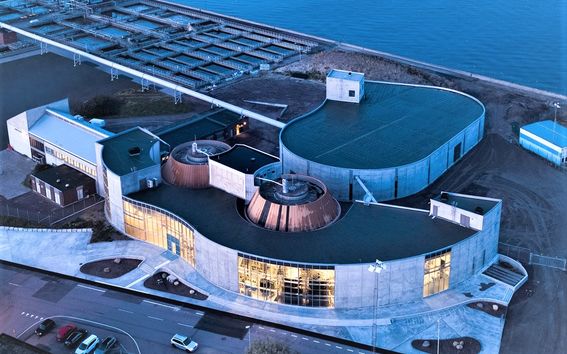Aalto innovation piloted in new circular economy district of Helsingborg

A pilot of the NPHarvest technology developed in Aalto University will be launched this spring in the new Oceanhamnen district of Helsingborg, Sweden. This new district will recycle nutrients, energy and water from wastewater.
A test plant in Helsingborg will be used to pilot new technologies for the local recycling of nutrients, energy and water, with three office buildings and 350 apartments covered in the initial phase. NPHarvest will be among the first pilot projects to launch. Piloting will also provide more information on the life-cycle costs of the NPHarvest process and the quality of its end products.
Helsingborg concept a model for cities of the future
The Helsingborg concept is based on three pressurised collection pipes and has been developed by Helsingborg's water utility, Norravästra Skånes Vatten och Avslopp (NSVA). One pipe collects lavatory waters, another collects kitchen biowaste and a third collects bathing and washing water. The first two contain nutrients and can thus be used in the NPHarvest process.
In the NPHarvest process, developed by researchers from Aalto University, phosphorus is collected through coagulation while a membrane is used to separate nitrogen, resulting in end products that can be used as fertiliser. NPHarvest can be applied to various circumstances and adapted on a case-by-case basis. So far, the process has been tested with separately collected urine, reject waters from a municipal sewage digestion tank and a biogas plant, seepage water from a landfill and wastewater from an agricultural dry digestion system. In Sweden, the process will be tested under a new set conditions.
'It is great to get to study how NPHarvest works in a separator system like this! We will also get to see how our technology measures up to the competition, which is very interesting,' says doctoral candidate Juho Uzkurt Kaljunen.
The economic potential has been verified
The NPHarvest process has been piloted for roughly one and a half years in locations around Finland. Information gathered on the functioning of the process was used by Teollisuuden Vesi, Aalto University's partner in the project, to assess the economic potential of the technology. According to the assessment, NPHarvest will be competitive especially once the gas-permeable membranes used in the process are available at a lower price. The manufacturing costs of the membranes are expected to fall as their use grows and production output increases.
'Cost efficiency has been a lodestar for the development of the process along with reliability and adaptability. Economics tend to have a major impact on decisions,' notes Professor of Practice Anna Mikola.
The project was funded until the end of November by the Ministry for the Environment and it was carried out in collaboration between Aalto University and several companies in the field: Teollisuuden Vesi, Helsinki Region Environmental Services Authority HSY, Gasum, Biolan, Nordkalk, Kemira and Outotec. The new project in Sweden is funded by Maa- ja vesitekniikan tuki, Svenskt Vatten and the J. Gustaf Richert Foundation and carried out with partners NSVA and Lund University.
For more information on the project:
Professor of Practice Anna Mikola, DSc (Tech.)
[email protected]
+358 40 7176 552
Read more news

Get to know us: Associate Professor Maria Sammalkorpi
Sammalkorpi received her doctorate from Helsinki University of Technology 2004. After her defence, she has worked as a researcher at the Universities of Princeton, Yale and Aalto.
Aalto computer scientists in ICML 2024
Computer scientists in ICML 2024
Getting bacteria into line
Physicists use magnetic fields to manipulate bacterial behaviour